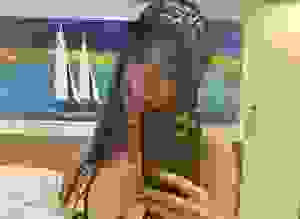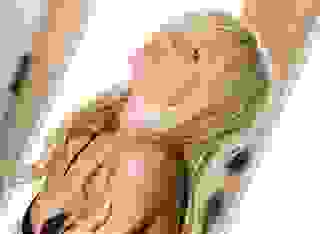- Novels and Novellas
- Leonardo Pt. 01: The Tale of Kothar
Note: You can change font size, font face, and turn on dark mode by clicking the "A" icon tab in the Story Info Box.
You can temporarily switch back to a Classic Literotica® experience during our ongoing public Beta testing. Please consider leaving feedback on issues you experience or suggest improvements.
Click hereThis story is pure fiction. Names, characters, businesses, places, and incidents are either the products of the author's imagination or used in a fictitious manner. Any resemblance to actual persons, living or dead, or actual events is purely coincidental. All characters are over the age of 18.
This story is fantasy but is the core of an idea mulling around in my head for several years now. I think it'd be the foundation for a great screen play. This first part doesn't contain any erotic situation or sex, but serves to establish the story line.
How it's received will determine if I continue.
-----------------------------------
Ben Burns wiped his brow and looked up at the searing Tuscan sun. He stood up and put his hands on his hips, bending backward to stretch and twist his hips. He was hot and his muscles were stiff from being hunched over for hours in the bottom of that damned hole. Being a field archaeologist wasn't for the snowflake.
Ben was an early 30's scrawny nerd low level field archaeologist for English Heritage, the British national institution responsible for identifying and protecting England's historical sites. He was 5 years out of Uni and 2 years into an exchange program in Italy.
You see, Leonardo Di Vinci, his life and works were Ben's obsession, a passion he'd inherited from his father. In fact it was why he had come to Italy. But before we get there we have to visit a little back story.
Ben's father, Henry, was an obsessed man and this obsession was passed on to his son. Professor Dr. Henry Smythe-Burns received his Phd in ancient languages from Oxford, where he later taught and conducted research into linguistics, syntax, and colloquialisms. It was during his world wide research that he began to see, or thought he was seeing, some similarities in writing styles and language/syntax use in writings of antiquity. The most peculiar thing was that these writings were from civilizations which in most cases were isolated by either geography or by time. Others in his field found the similarities just that, similarities and besides, "over thousands of years there were going to be repeating ideas."
Repeating ideas yes, but nearly identical use of terms, cadence, flow, etc? These weak explanations did not deter Henry. His antenna were up and he was intrigued and when he became intrigued he was like a one minded bloodhound sniffing out clues.
Finally, after 30 years of study he came to a firm yet barely believable conclusion. Leonardo Di Vinci wasn't what the world thought him to be.
Unfortunately Henry died before he could personally publish his theory to his peers, but on his death bed he confided all to his son Ben.
The condition effecting Henry manifested itself physically but his mind remained sharp. Ben knew of his father's eccentricities, everyone who knew him did, but he lovingly sat next to his father's bedside to listen respectfully. Henry was painfully aware of his son's skepticism of his work but then again his son didn't know all he had discovered. Henry started slowly and revealed his suspicions, logically laying out detailed evidentiary trails and asking Ben to render his own opinion from time to time. At first Ben, who had his Masters on the Italian Renaissance was dubious. He knew Leonardo well because he found him fascinating on multiple levels, but he slowly began to understand his father was following a trail of evidence, not conjecture. Finally, after a week of intense discussion Henry told Ben of a locked trunk in his office in Oxford. He implored him to examine the documents.
Ben was now intrigued and he did just that. Upon leaving the hospital that day he drove straight to the office, retrieved the trunk and took it to his father's cottage in the Cotswolds.
Opening it began the first dramatic change in the direction of his life.
Henry died several days later disappointed he'd been unable to convince his son. But Ben partly to honor his father's life work, spent three months reading, re-reading, looking for errors and mistaken conclusions, he found none. His father's research, although ridiculous on the face of it, looked to have a very sound base. Ben could find no flaws or failed reasoning.
One dreary damp day he visited his father's grave. During a moment of introspection Ben made a promise to his father. He resolved to find proof of his father's conclusions and set off on his own path of investigation.
That was 3 years ago and his research conducted after his father's death was why he was in Italy, the only Brit on an Italian team excavating an unimpressive 1st century Roman villa near ancient Pisae (modern Pisa). Ben had argued feverishly to get on this team. Much to the dislike of the Italians, finally he'd succeeded. The site was important to Ben because it was one of the last un-researched locations in his father's notes. In an obscure writing Leonardo had made an off hand comment about an ancient site which required "most haste to depart, destruction claiming many drafts." The geography of that area matched this little Pisaen valley.
The dig they were on revealed a villa which sure enough had been destroyed and burned. The site was on a list of places of interest which Henry had compiled. Mostly through Ben's insistence, the long known site had only recently been added to their dig list. Although the dig leader thought the destruction was the result of a Galic raid, the complete systematic destruction seemed more intentional and total to Ben. It didn't feel random or haphazard as a raid would be.
Having had repeated disagreements with the dig leader he'd been left to his own devices to sift out a room which for your typical Roman villa would have been either a garden room or a dining room. Instead Ben was finding it unusually narrow and long, which didn't lend itself to either gardening or dining. It felt like a hallway leading somewhere but at the end he found a wall, a dead end. One thing he knew about Roman villas was that they simply didn't have dead ends. The hallway floor was an exquisite but very un-Roman mosiac which included a motif reminiscent of Asia. The mural on the end wall also was unique in its depiction of seacoast looking very much like the now famous Kho Pi Pi spires on the coast of Thailand.
As he exposed more and more an inscription on the border appeared. He carefully sponged off the dirt and stepped back to read it, his lips shaped out the words. He dropped his trowel and was almost rendered speechless.
It read, "Cognitione naturali desiderio homins bonorum." Translated this meant, "The Natural Desire of Good Men Is Knowledge." On it's face it was unusual but unremarkable, however Ben knew a different and, to him anyway, a far more shocking correlation.Those words were Leonardo Da Vinci's favorite muse, and here they were, on a building built more than a millennia before his birth. Coincidence?
After getting the mural, made up of thousands of tessera, completely cleaned off he stood back and began to document it through photography and sketches. As he took pictures and made notes the whole thing felt oddly familiar. It was after wetting a slightly damaged area to bring out greater contrast that his eye caught a second well camouflaged Latin message hidden in tessera shadowing.
This one read, "Scientia hic vivit" or "Knowledge lives here."
Ben smiled widely, lightening never strikes twice in the same place but here was another Leonardo connected saying. A saying which had been found in each of his three known workshops.
Over the next 2 weeks Ben continued excavating the hall and uncovered more odd art work along with a number of statues buried under the collapsed roof. The artwork vaguely mirrored some of Leonardo's work. As for the marble statues, most were typical Roman dedications but as he cleaned one it immediately struck him as very different from the rest. It was crafted in a different fashion. More life like and detailed than the other marbles and depicted the torso and head of a man dressed in Roman toga and hair style but the face, the face dropped Ben to his knees.
Even though the statue had been chipped at, probably at the time of the villas destruction, the subject was unmistakable, the face was of a very young man but it was clearly the man the world knows as Leonardo.
But this should have made no historical sense at all. History records Leonardo was born in the nearby Tuscan town of Vinci in 1452 CE. Evidence was that this Roman villa was occupied 50-150 BCE.
He knew no one else would believe him, experience had taught him that. So he kept to himself and continued his work concentrating on recording everything in detail. Over the next month most of the other interns had moved to another site related to this one but across the shallow valley. Ben was left alone because the dig leader disliked him. The feelings were mutual and provided the privacy Ben desired. During that time he managed to clear the entire hall of its collapsed ceiling and it was when moving a large roofing tile that he disturbed some other bricks and the sand began to drain away, disappearing down between them. There seemed to be a void along side the wall.
The damaged tile and flooring suggested the only reason he'd found this void was because a long rotted away partially burned timber had fallen on it during the destruction of the villa. Wall debris and roofing material served to bury and hide it but when the villa had been occupied Ben determined the opening had been likely well disguised.
Ben moved a large tile, revealing a number of shattered marble blocks which had evidently made up a wall concealing the doorway. Beyond, a narrow void appeared. Retrieving his torch he shined it into the void to see the floor gently descending and disappearing away around a dim corner.
He checked to ensure the other diggers were far away and then carefully widened the opening until it was just big enough for him to slither into. Slipping on his head mounted Go-Pro to record everything he wriggled inside and pulled a roof tile over the hole to hide it.
The torch showed him to be on a stone cut stairway which descended about 30 steps and curved to the right heading under the hill next to the villa. He followed it and after some 20 meters he found himself at a wooden doorway. He cast the light and found the same inscription over the door, "Scientia hic vivit" as well as a few clearly Roman curses for anyone who entered.
Ben smiled at that. Leave it to Leonardo to utilize a curse he likely found ludicrous at its core.
The door was solid oak reinforced with iron banding. He examined it closely. Ordinary Roman design but with a few very unusual non-Roman designs. Again, reminiscent of Leonardo's work. Ben tried the door, it wouldn't budge. He turned the obvious latch and pushed, then pulled. No movement. He stood back for a moment and pondered the problem. No obvious blockages, hinges opened inward, the door large turned freely yet the door didn't budge. Almost as if there were a catch preventing it from opening, something about this felt familiar. He searched his memory for a clue and he recalled the second of Leonardo's workshops positively identified to having been his had a very effective hidden latch which kept the door from opening. Ben let his fingers trace around the top lintel and "YES!" he said out loud as he found a depression, pushed down hard and heard a series of metallic "clicks."
He pushed again and the door slowly swung inwards revealing a dark room beyond. Ben cautiously stepped into the room and gazed about. There were tables, chairs, papyri, and contraptions and sculptures in various stages of work. He briefly examined several, they all bore the hallmarks of Leonardo Da Vinci.
Ben's head was swimming again as he tried to gather it all in. He gently picked up a few of the papyri and began reading. The comments and prose, even thought in Latin, was pure Leonardo, even his backward writing was evident. He spent hours and several battery changes reading material. The Go-Pro recorded every move he made and he took close up stills of everything he found. Papyri, the room layout, works in progress, everything.
After 4-5 hours he was confident he'd at least looked at every item so he emerged from the vault. Just as he began to climb up out of the trench he heard,
"Eccoti! We've been looking for you!" It was the old bastard. "We've been looking for you for hours!" he exclaimed and droned on in Italian which, for Ben, turned into a Charlie Brown cartoon adult speaking.
Ben tried to calm him and made up a quick BS story, "I'm so sorry, I thought staying in the dark and using the the shadows cast by the full moon might give me more clues about this damned hallway."
Ben casually walked away expecting to be followed. He wasn't but Ben didn't want to turn around and cause any further suspicions. Last he saw Professor Albani he was looking disapprovingly down into the trench. He was glad he'd placed the roofing tiles back over the void entrance.
The next morning Ben returned and was shocked to find the entire villa excavation had been filled in by a bulldozer. When he confronted Albani there was a huge argument. Albani felt there was nothing left for their methods to reveal and the site needed to be covered over to preserve it for future archaeologists. Ben expressed his opinion in a typically eloquent way, "You stupid fucking prat" and was dismissed on the spot.
At first he was taken aback and shocked that he wouldn't be able to do further investigations but was comforted by the fact that he had his recording of his entire time in the vault and he knew the vault was at least buried and safe. Ben left pissed but hurried back to his apartment to begin examining what he had.
He returned home to the UK and over the next year he worked odd jobs for English Heritage while all his spare time was spent deciphering cryptic papyri and analyzing photos. He discovered that this was the workshop of a previously unknown person named Livianus Vitus. When he found the name he smiled at it. Roughly translated it meant, "To Envy Life." All of the texts, artwork, science, machines pointed to one impossibility, that Leonardo Da Vinci was alive at the height of the Roman Empire. Eventually, about 9 months into his self imposed research solitude he read what was the actually the final papyrus written in the workshop.
Livianus Vitus wasn't a name unknown to history and was mentioned by an obscure Greek born Roman Historian named Theophanes of Mytilene. Apparently Livianus was highly influential and a bit of a rogue. Wildly popular with the ladies but unpopular with most of the upper classes due to politics beyond his control. Although he'd been protected by the owner of the villa, a Roman Senator, the local Equestrian had lost out on some commercial venture with the Senator. The last papyri spoke of Livianus preparing to leave. Ben imagined that in revenge the Equestian had destroyed the villa and, as was common to the Romans, slaughtered the slaves and livestock as well. Ben concluded Livianus/Leonardo had to have escaped because, well we had Leonardo.
"Escaped, but to where?" Ben wondered.
A month later and Ben had his clue. It was way out out on a limb but it was the only clue as to where this may have Livianus had gone. He found reference to "Dimnonii," an obscure regional name which popped up on a single scroll as a place of safety which Livianus was familiar with. It took Ben several days in the British museum to identify it. The modern name for the area is Cornwall, in the west country of the UK.
The clues he'd found brought him to the UK and after minding his time with English Heritage he managed to convince his local supervisor to allow him to work an area near a scheduled site, but not on it. Ostensibly to determine the extent of the site but Ben had matched dates and felt it was the most probable place in Cornwall to search. At the very least it was a beginning place to look. Soon he found himself working near the site of a Roman style villa close to Magor Farm near Camborne in County Cornwall.
Ben arrived on site on June 12th and found lodging at a nearby bed and breakfast. He was mostly the object of local curiosity. Cornwall isn't the most sophisticated or cosmopolitan of places but the people were friendly and he grew to love the west country.
The farmer on whose property the villa was located was named Henry Penwilly. He was in his late 40's and the excitement of the villa excavation kept him visiting the dig site. An annoyance Ben had to put up with. All throughout out the day members of the family would drop by and see what he was up to.
The farmer's wife Cheryl 37, his daughter Charlotte 19, and two sons, John 14 and William 11. They were friendly enough. Each day at lunch time Charlotte brought him lunch consisting of a traditional Cornish pasty. He'd grown to love the pasty and enjoyed Charlotte's company as he ate.
Ben suspected the parents were sending Charlotte down. They'd probably like having their daughter married off to a successful professional and not to a local farmer.
Charlotte was very pleasing to the eye, she was was 19, stood about 5' 5" tall, had shoulder length black hair she usually kept in a pony tail with her bangs cut across her forehead, pale completion, freckles on her nose, bright brown eyes, a small delicate nose, thin lips, a nice figure with a few extra pounds on her hips, her full beasts pushed out the sweater she wore, she looked every bit a farm girl.
Ben asked her out several times but was rebuffed each time. She was pleasant enough but, parents be damned, she wasn't interested in him. Ben couldn't blame her really. After all, he was a skinny socially inept geeky historian. Still, all the same, be grew to dislike her, but all in all, she was the only real bright spot in several weeks of fruitless digging.
Ben pretty quickly realized that the site was not actually Roman but appeared every bit to be a Romanized Cornish structure. He didn't bother to tell his supervisor in Exeter this. In fact he made his dig sound promising and got some ground penetrating radar (GPR) scans and a LIDAR aerial scan out of it. The two methods revealed the outline of an otherwise unknown structure with promising subsurface voids.
The location peaked his interest because it was a virgin area owned by different neighbor. No farming, no mining (of which Cornwall was famous), and of no obvious interest to anyone. He received permission from the owner to dig some test pits and he found what appeared to be a very old stone structure. Similar to a Roman villa but with significant structural differences. The finds were confusing because they suggested occupancy dates ranging between 100 BCE and the early 1500's. That was 1,600 years, which would make this one of the oldest continuously occupied structures in Britain but located in a very out of the way location. Ben's antenna twitched when he thought of why that might be. Several weeks into the work he found what he'd been hoping to find. It was poorly preserved due to the wet Cornish climate but there was the inscription, "Scientia hic vivit."
Ben almost dance with glee when the water rinse revealed it.
It took him 4 months of tedious work but, just as in Italy, Ben slowly dug his way forward following his nose past two false doors and one false descending set of steps and soon found himself digging his way down another stone staircase which had been intentionally and carefully filled in with demolition rubble. After about 20 feet he broke through to a long subterranean passage which his torch could not see the end of.
Ben grabbed his GoPro and after nearly 30 minutes of careful walking down a slowly descending curving passage Ben found himself looking at a heavy oak door. Ben figured he'd walked a mile or so. The door was lying across the doorway and obscuring what was beyond. He examined the door and surrounding structure. Some subterranean collapse had fractured the door sill and caused the door to fall. Cornwall had a long history of mining and collapses were fairly common. But it did peak his spidey senses. He did a cursory examination of the door and found it nearly identical to the one in Italy. Finishing his examination he lifted it and leaned it against the wall.








